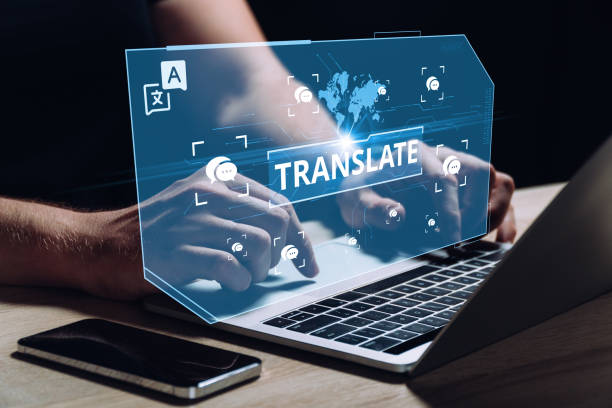Introduction
In today’s interconnected global economy, businesses and innovators are constantly expanding their reach across borders. With this international expansion comes the need for effective intellectual property (IP) protection to safeguard innovations, inventions, and technologies. Patents play a pivotal role in this regard, serving as legal instruments that grant inventors exclusive rights to their creations for a specified period. However, in the realm of global IP, effective communication is paramount, and this is where patent translation emerges as a crucial component.
This article explores the importance of patent translation in the context of global IP protection. We will delve into the challenges and complexities associated with translating patents, the role of accurate translation in maintaining the integrity of IP rights, and how this process contributes to fostering innovation on a global scale.

Understanding the Global Landscape of Intellectual Property
The globalization of markets has transformed the way businesses operate. Companies are no longer confined to their home countries; instead, they seek to tap into diverse markets worldwide. In this global landscape, protecting intellectual property becomes a complex challenge due to differences in legal systems, languages, and cultural nuances.
Patents, as a form of intellectual property, are territorial rights, meaning they are only enforceable within the jurisdiction where they are granted. Therefore, to extend the protection of a patented invention to international markets, businesses must navigate the intricate web of IP laws and languages. This is where patent translation becomes indispensable.
Challenges in Patent Translation
Translating patents is a specialized task that involves more than just linguistic proficiency. It requires a deep understanding of both the source and target legal systems, technical expertise in the subject matter of the patent, and precision to ensure that the translated document accurately reflects the original intent.
One of the primary challenges in patent translation is the technical and scientific nature of the content. Patents often contain highly specialized language and complex terminology specific to the field of the invention. Translators must possess not only linguistic fluency but also a solid grasp of the technical jargon used in the patent.
Moreover, legal systems vary across jurisdictions, and the subtle nuances in language can have significant implications. A mistranslation or misinterpretation of a legal term in a patent document can lead to serious consequences, potentially jeopardizing the validity and enforceability of the patent in a particular jurisdiction.
Cultural differences also play a role in patent translation. Certain expressions or idioms may not have direct equivalents in the target language, and translators must navigate these cultural nuances to ensure that the translated patent remains accurate and culturally appropriate.
The Significance of Patent Translation in Global Intellectual Property Protection
In an era marked by technological advancements and a globalized marketplace, the protection of intellectual property (IP) has become a paramount concern for businesses and innovators. Patents, as legal instruments granting exclusive rights to inventions, play a crucial role in safeguarding innovations. However, as businesses expand internationally, the importance of patent translation in global IP cannot be overstated. This article explores the multifaceted significance of patent translation in the context of global intellectual property protection.
1. Breaking Down Geographic Barriers
One of the fundamental aspects of the global economy is the transcendence of geographic boundaries. Companies are increasingly looking beyond their home countries to tap into diverse markets and collaborate with international partners. In this scenario, the protection of intellectual property must also extend beyond borders. Patent translation facilitates this expansion by ensuring that the details of an invention, as outlined in a patent, are accurately conveyed in the languages relevant to the target markets.
By breaking down linguistic barriers, patent translation enables inventors and businesses to navigate the complexities of different legal systems and effectively secure their intellectual property rights worldwide. This becomes particularly crucial in regions where multiple languages are spoken, as accurate translation ensures that the patent is enforceable and respected in each linguistic jurisdiction.
2. Legal Compliance and Protection
Patents are legal documents, and their efficacy depends on adherence to the legal frameworks of the jurisdictions in which they are filed. The translation of patents is not just a linguistic task; it is a legal necessity. Each country has its own set of patent laws, and accurate translation is essential to comply with the specific requirements and nuances of each legal system.
Inaccurate or incomplete translations can lead to legal complications, potentially resulting in the loss of intellectual property rights. Patent translation serves as a bridge between different legal landscapes, allowing inventors to navigate the intricacies of foreign patent offices, legal proceedings, and contractual agreements with confidence.
3. Fostering Innovation through Collaboration
Innovation is often a collaborative effort that transcends national borders. Researchers, scientists, and inventors from different parts of the world come together to advance technology and knowledge. Patent translation facilitates this global collaboration by ensuring that the details of inventions are understood accurately by all parties involved.
When patents are translated effectively, it promotes a shared understanding of technological advancements and encourages further innovation. This collaborative spirit is essential for addressing global challenges, as it allows for the exchange of ideas and the development of solutions that can benefit societies on a worldwide scale.
4. Mitigating Risks and Ensuring Enforcement
The enforcement of intellectual property rights is contingent on the accuracy and clarity of patent documentation. In the absence of precise translation, the potential for legal disputes and infringements increases significantly. Competitors may exploit language discrepancies to challenge the validity of patents or engage in unauthorized use of patented technologies.
Patent translation serves as a risk mitigation strategy, minimizing the chances of misunderstandings and disputes. It provides a solid foundation for the enforcement of intellectual property rights, allowing businesses to take legal action against infringement with confidence that their patents have been accurately represented in the target language.
5. Facilitating International Trade and Market Access
For businesses looking to expand globally, patent translation is a gateway to international trade and market access. Many industries, such as pharmaceuticals, biotechnology, and electronics, rely heavily on intellectual property protection. Companies in these sectors must navigate a complex web of regulations and standards in various countries to bring their products to new markets.
Accurate patent translation ensures that products and technologies comply with local laws and regulations, paving the way for market entry. It provides a level playing field for businesses of different linguistic and cultural backgrounds, fostering fair competition and innovation on a global scale.
6. Supporting Due Diligence and Investment
In the context of mergers, acquisitions, or international collaborations, due diligence is a critical step in assessing the value and risks associated with intellectual property assets. Patent translation plays a pivotal role in this process by providing potential investors or collaborators with a clear understanding of the IP portfolio.
Accurate translations of patents enable informed decision-making by highlighting the scope and significance of intellectual property assets. This transparency is crucial for building trust between parties involved in business transactions and collaborations.
7. Adapting to Cultural and Linguistic Diversity
Cultural diversity is an integral part of the global landscape. Patents, however, are often written in a language that may not be the native language of the inventors or stakeholders. Patent translation addresses this challenge by adapting the technical and legal language of patents to the cultural and linguistic context of the target audience.
Cultural adaptation goes beyond literal translation; it involves conveying the intended meaning in a way that resonates with the cultural norms and expectations of the target audience. This ensures that the patent is not only accurate but also accessible and relatable to individuals from diverse linguistic backgrounds.
8. Preserving the Integrity of Intellectual Property Rights
The accuracy of patent translation is paramount in preserving the integrity of intellectual property rights. A patent is a legal document that defines the scope of protection granted to an invention. Any ambiguity or error in the translation can result in unintended consequences, such as a narrowed scope of protection or, in some cases, rendering the patent unenforceable.
Infringement issues can arise when a poorly translated patent fails to convey the full extent of the invention. Competitors may exploit these uncertainties to produce similar products without facing legal consequences. Therefore, precise and reliable patent translation is a critical component of enforcing and defending intellectual property rights on a global scale.
Additionally, patents are often cited as prior art in the examination of new patent applications. Accurate translation ensures that the relevant information is conveyed correctly, helping patent examiners make informed decisions about the novelty and inventiveness of a new invention.

Strategic Considerations in Patent Translation
Effective patent translation goes beyond mere linguistic conversion. It requires a strategic approach that considers the unique challenges presented by each jurisdiction and language pair. Some key strategic considerations include:
- Jurisdiction-Specific Requirements: Different countries have specific requirements for patent documents. Some jurisdictions may require the translation of the entire patent document, while others may only need the translation of specific parts, such as claims. Understanding these jurisdiction-specific requirements is essential for efficient and targeted patent translation.
- Timeliness: Timely translation is crucial, especially in industries where rapid innovation is the norm. Delays in translating and filing patents can result in missed opportunities and potential infringement risks. Therefore, businesses must work with translation providers who can deliver accurate translations within tight timelines.
- Quality Assurance: Establishing robust quality assurance processes is essential in patent translation. This involves thorough proofreading, review by subject matter experts, and validation of the translated document against the original. Quality assurance measures help prevent errors that could compromise the enforceability of the patent.
- Cost Efficiency: While cost is a consideration, businesses should prioritize the quality and accuracy of patent translation over cost savings. Cutting corners on translation services may lead to costly legal disputes or the loss of valuable intellectual property rights.
Conclusion
In the dynamic landscape of global intellectual property, patent translation stands out as a linchpin in the protection and promotion of innovation. As businesses expand their reach across borders, the need for precise and reliable translation of patent documents becomes increasingly critical.
The challenges associated with patent translation, from technical complexities to legal nuances and cultural differences, highlight the importance of strategic and thoughtful approaches to this process. Businesses that invest in high-quality patent translation services gain a competitive edge by ensuring the accuracy and enforceability of their intellectual property rights in the global marketplace.
In essence, the importance of patent translation goes beyond linguistic conversion; it is a strategic imperative that underpins the seamless functioning of the global innovation ecosystem. As we continue to witness advancements in technology and the increasing interconnectedness of economies, the role of patent translation will remain pivotal in shaping the future landscape of global intellectual property protection.

